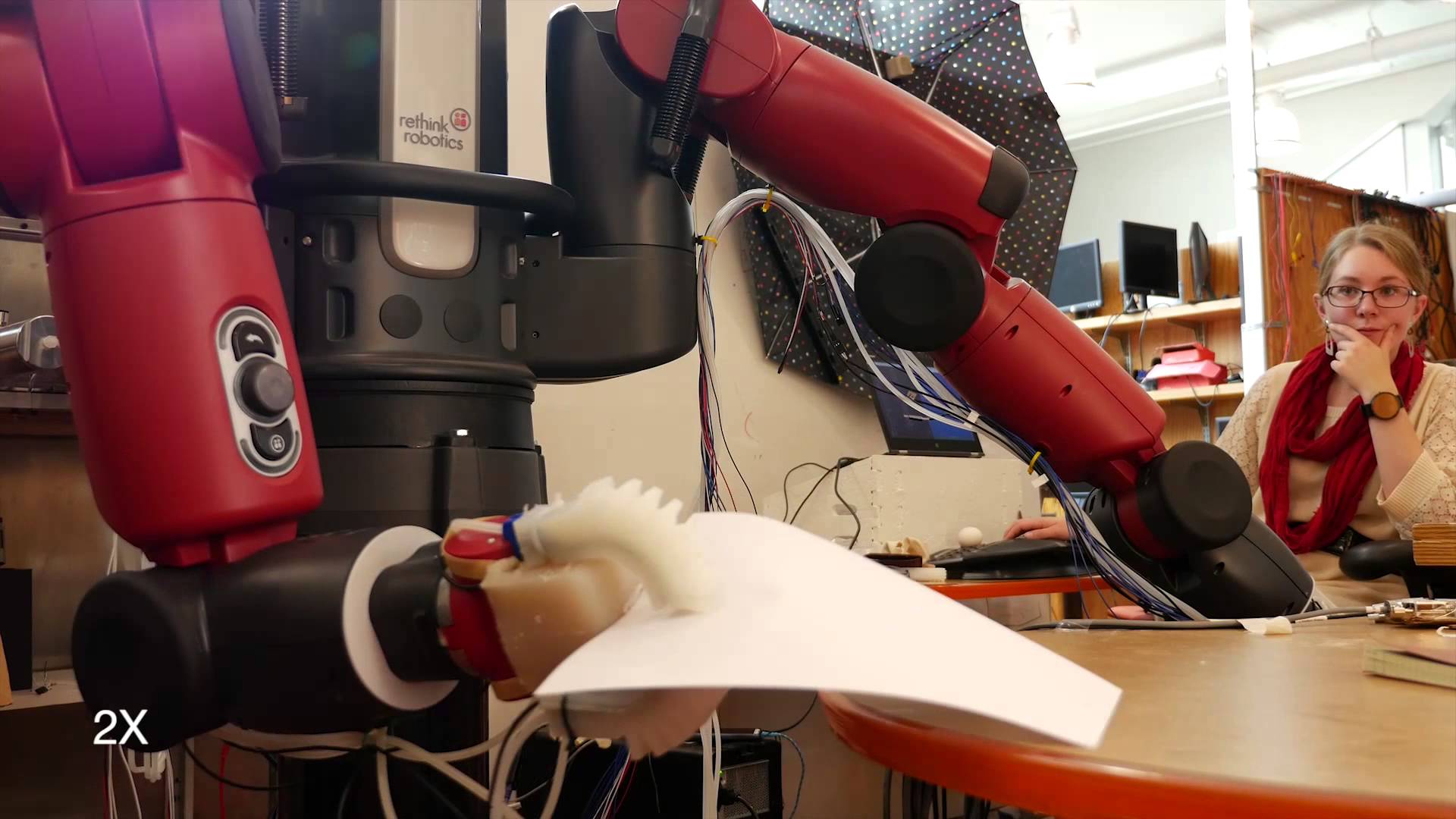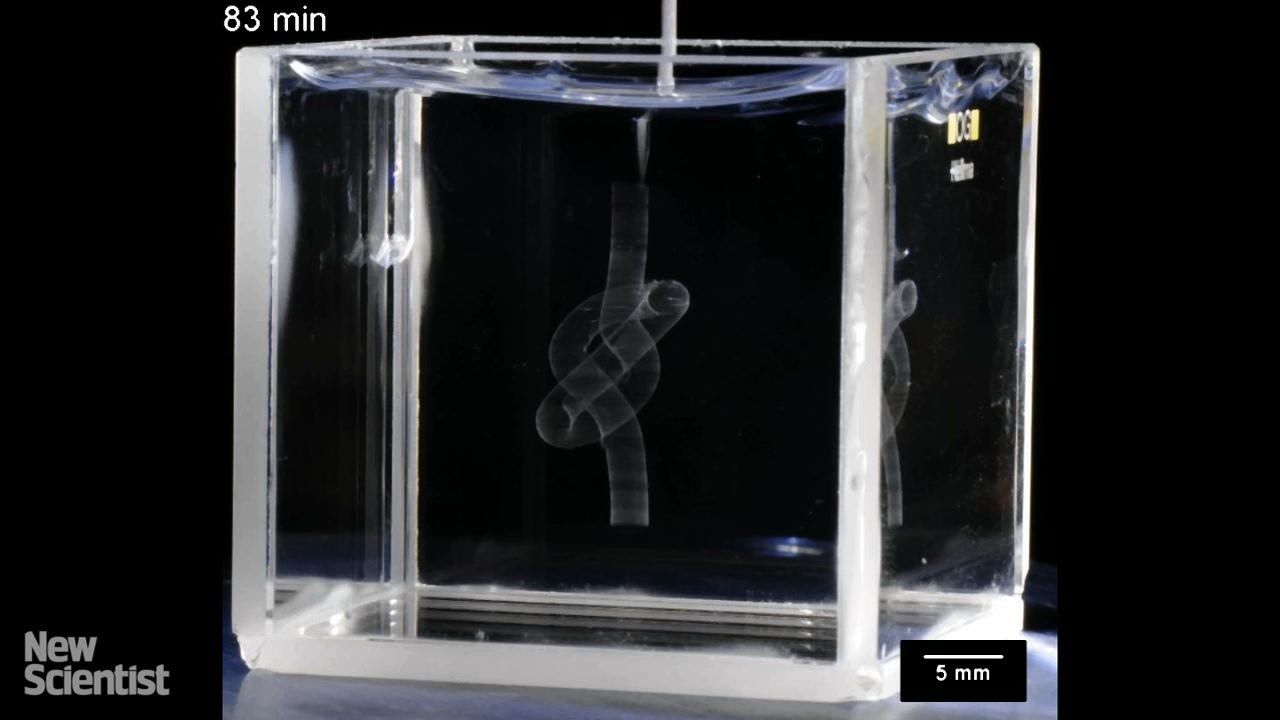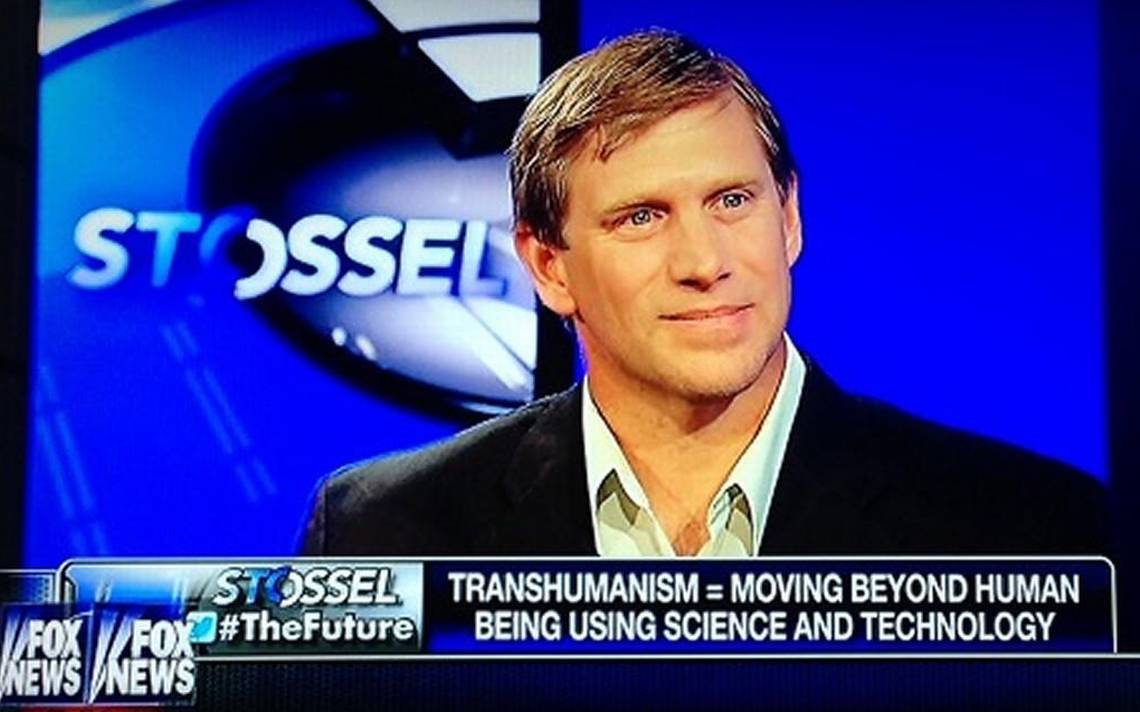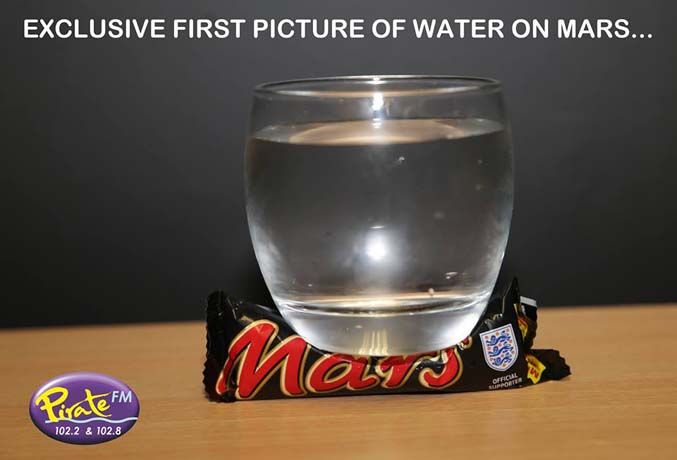Engineers at MIT have built a three-fingered robotic hand that can identify and safely grasp delicate objects by relying on an increasingly popular approach to making robots useful: making them soft.
Human hands are not easy for robotics engineers to emulate. The simple act of picking up an item involves all kinds of abilities that humans don’t notice. Among other things, our grip has to be secure without crushing the thing we’re grasping, and our fingers have to form shapes that can fit many types of objects — everything from a sheet of paper or a piece of fruit to a pencil or a living thing.
Researchers at MIT’s Computer Science and Artificial Intelligence Laboratory designed a soft silicone “hand” with embedded sensors that they can train to recognize different things. The team will present its research at this month’s International Conference on Intelligent Robots and Systems in Hamburg, Germany.








